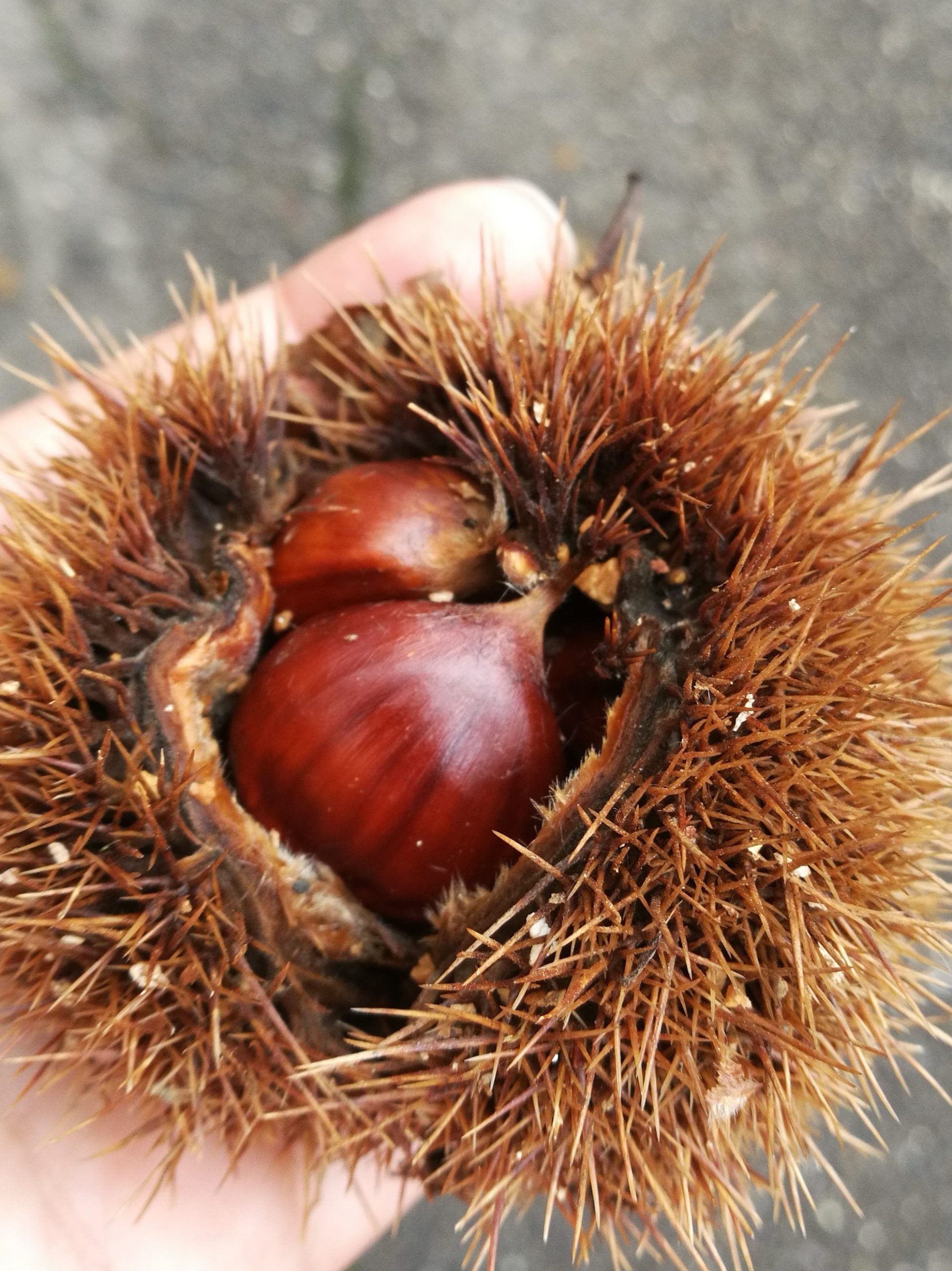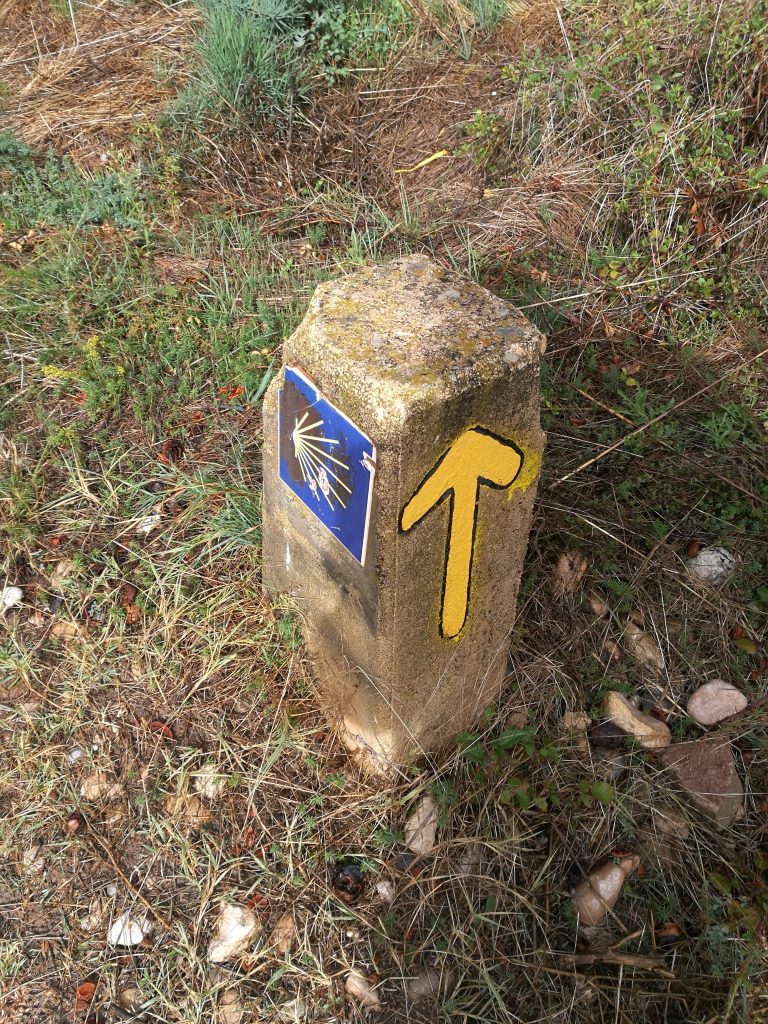Camino de Santiago can be a dangerous task, even life-threatening. All it takes sometimes is a one wrong step. Juan and I had a rule – whoever walked through a dangerous spot first, looked down on the slope and announced “survivable” or “not survivable”. People who survived the pilgrimage in the middle ages deserved to bypass purgatory and go straight to heaven. Let’s hope for them that the passage to heaven was not long, or even better, that they didn’t have to walk it. Nowadays people on the Camino usually die from heart attacks, exhaustion, hypothermia or dehydration. The catholic church doesn’t guarantee a pilgrim’s afterlife in heaven anymore, but that doesn’t stop thousands of people from suffering on the long road.
Could the Camino be the purgatory?
Medieval criminals had a choice between immediate death or a very likely death on the Camino. A few modern criminals, especially young ones, can still walk the Camino to get legally purified from their sins. They have to walk all the way from Belgium to Santiago, accompanied by a guardian. I would say this walk can be both a punishment or a reward for the guardian. Spain releases prisoners out on the Camino (still with guardians 🙂 ) to help with their reintegration into society. After all, all pilgrims came to think about their lives.
Juan and I slowly started realizing that our Camino was about to end in a week. We still had the same attitude as when we started – we won’t stop walking just because it gets difficult. We will stop to solve problems and keep going. The idea of not finishing the Camino rarely crossed our minds. At this moment our minds were occupied by the last big mountains which we had to cross on the way to Santiago.
The walk towards O Cebreiro started as quite uneventful. This Camino stage was 28 km long, with the first 21 km completely flat. We were mostly walking along a fast road, separated from the Camino trail by concrete blocks. Luckily there was not enough traffic to annoy us. However, the pedestrian traffic slightly increased. Our pilgrim family grew overnight – we met around five new pilgrims which started in Ponferrada. As we were passing throught empty villages, we noticed that the architecture had changed. The stone houses strongly reminded me of Celtic settlements. Even in a seemingly empty village it’s not difficult to find a pub. And if there is beer, there is Matthias. Matthias is a strong German man who carried the entire weight of his backpack on his shoulders.
He walked the Camino in shorts in any weather and his muscles were powered by “liquid bread”.
We usually met him enjoying a glass of “bread”, then he passed us and we saw him a pub again. This situation repeated several times on this Camino stage because he was stocking up on nutrients before the big climb.

When I think of this day, my brain starts playing images of chestnuts. Pools and rivers of edible chestnuts covered the ground and we stepped on them all the time. To be more accurate, we tried to avoid them, the shells were quite spiky. Food food everywhere but not an oven to bake it!

We had to climb 700 m in 7 km. The climb wasn’t as bad as we expected, but the weather definitely was. A heavy rain started around the time when we entered Galicia.
There were no more mountains to shelter us from the true north Atlantic weather.
We had one thing to celebrate – we made it to the least covid infected region in Spain. We were obliged to share a lot of personal information online and have a QR code ready in case we were checked by police. The host in our albergue was very serious about that and reminded us several times.

O Cebreiro looked like an open-air museum displaying typical Galician architecture and food on every corner. For dinner we therefore had caldo gallego and Cebreiro cheese with honey as a dessert. The village had a cosy church with a welcoming priest inside. He gifted me with pictures of saints that made my grandma cry when she received them by post. Another priest from O Cebreiro, Don Elías Valiña Sampedro, was responsible for reviving the Camino tradition in 1984. He was a historian researching the medieval St. James Way. During his life he cleaned the Camino trail, marked crossroads with yellow arrows and promoted the pilgrimage.

The following morning looked miserable – wet and cold. We absolutely didn’t feel like going outside. Furthermore, we still had to climb a little bit up. I started feeling dizzy from the lack of oxygen in the first half an hour. My muscles did not work properly and I had to pay attention to my breathing in order not to hyperventilate. Our backpacks quickly soaked so much rainwater that they felt a few kilos heavier. Until now, we never really cared about this issue. Usually they soaked some water and quickly dried, it had never been raining for so long or so heavily. Juan watched some Camino videos where they suggested to carry a waterproof sac inside of the backpack, so our clothes and electronics were always safe. Now we finally realized what’s the purpose of the standard backpack rain covers. It’s not to protect the items in your backpack from getting wet, it’s to protect the backpack itself! Sadly, we left the covers at home. Even though they don’t weigh anything. Sin #1.
The day was not getting better. We lost the Camino trail for a while and Juan almost got bitten by a German Shepard. The temperature was dangerously decreasing with altitude.
When we reached the highest point Alto do Poio (1334 m), the rain turned into wet snow and hail.
Suddenly a house with many cars at the parking lot emerged from the hail curtain. We were lucky, it was a pub! We were dying for a break in a dry place. The room was full of men dressed in orange waterproof gear standing around a fireplace. They were hunters. Nobody responded to my greeting. As we headed towards the only free table, the hunters moved away from us. We didn’t understand a word, they were all speaking gallego – a mixture of Spanish and Portuguese.
The waitress made us tea and fried some chorizo. When it was time to pay, she started thinking and came up with “18 €”. In Slovakia we call this “vysokohorská prirážka (high altitude surcharge)”. This is how people in skiing resorts explain why a cup of tea costs three times more than in the lowlands. The Galician waitress clearly tried to gouge us but, honestly, we didn’t want to argue with her. Being surrounded by twenty strong and unfriendly men was uncomfortable enough. As we left they were ready for the hunt. Matthias later told us that he stopped in the same pub. When the hunters saw him in shorts, they felt sorry for him and offered him a ride. Matthias refused and, just like us, continued the walking misery of the day.
When we thought that the weather couldn’t get worse and accepted it, we were almost blown away from the slopes on the way down. Juan’s Gore-Tex jacket stopped working after three hours of intense rain and the puffy jacket underneath was slowly getting wet. Wearing wet gloves his hands got so cold, that he had to warm them up in his wet pockets, which obviously didn’t work much. He also had to use at least one hiking pole to save himself from a nasty fall, so one hand was always freezing. My Gore-Tex jacket was more expensive and lasted around five hours of heavy rain before it leaked. My gloves were also a bit better and still kept me warm even though they were soaking wet. Still, we should have bought woolen gloves. Sin #2.
Our legs, hands and shoes were soaking wet for hours.
We were exhausted, navigating through rain and slippery terrain. The walking was the only thing keeping us away from hypothermia. We knew that we couldn’t stop under any circumstances. You close your eyes for a second and you will never open them again. Juan didn’t even bother to stop for a pee. It was his most satisfying moment of the day. He gave me a big smile as warm pee was rushing down his tights.
I’m sure many people died because they overestimated their gear in the mountains. I could have easily been one of them. I started shivering when snowflakes melted on my face. We really needed a completely waterproof jacket and pants for this hike. Sin #3. We were only one hour away from the albergue and I switched into tunnel vision. Naked and unable to keep my eyes open I finally collapsed into my sleeping bag. This was the most difficult Camino stage so far. And now, imagine this – half of the day we were playing cat and mouse with a group of four hikers. They were not pilgrims, we had never seen them before. They spoke gallego and carried only small backpacks, looked like typical day hikers.
Why the hell would anyone go on a hike today???

Leave a Reply